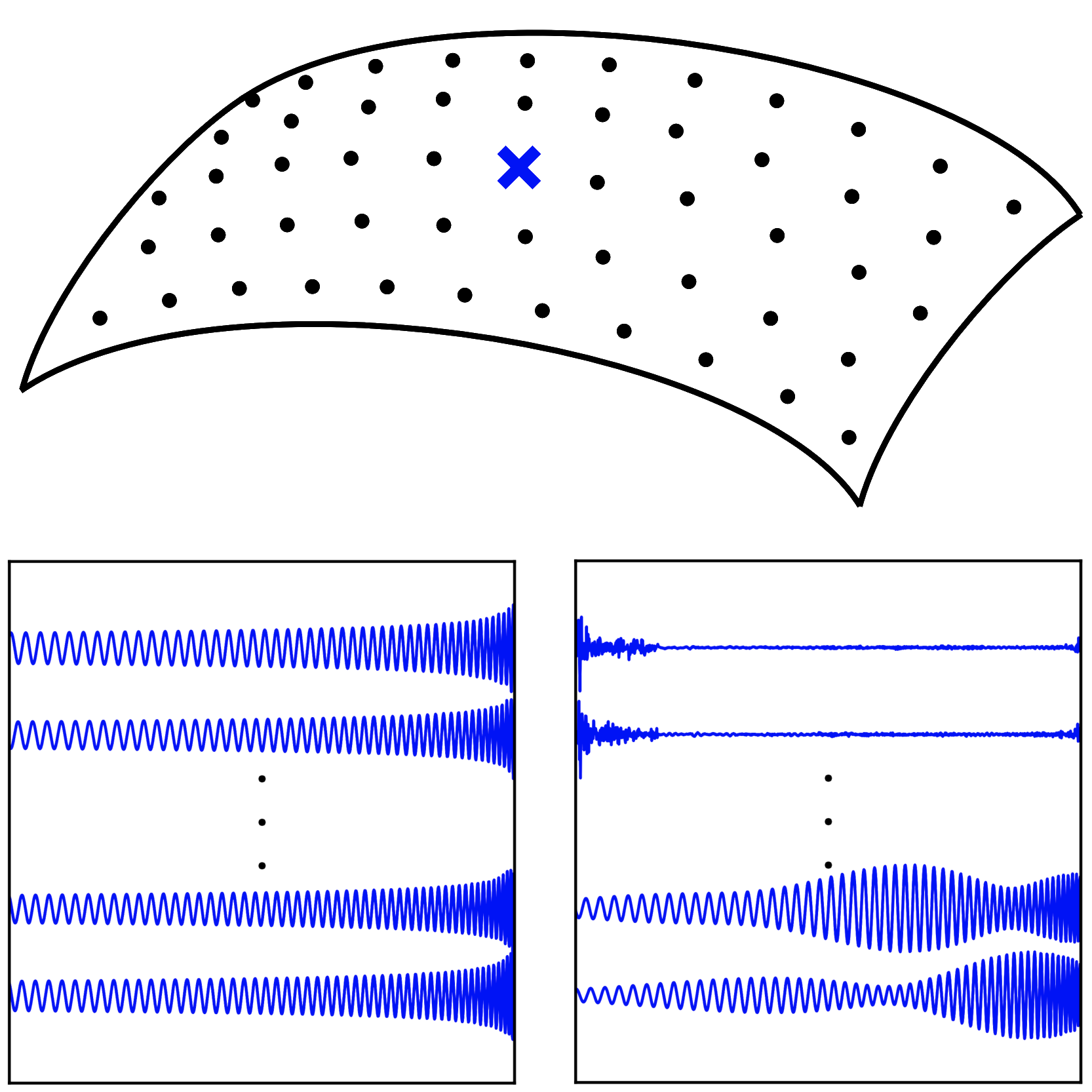
Gravitational Wave Scalable CyberInfrastructure (gwsci)
Gravitational wave detector calibration
Passing gravitational waves stretch and squeeze the space in LIGO, Virgo and KAGRA’s arms. The arms are held in place through a control loop that measures the interference pattern of the recombining laser light. Data calibration uses the control loop signals to infer the stretching and squeezing of space. This map between control signals and gravitational wave strain is called calibration. Accurate calibration is necessary to determine the gravitational wave source, e.g., to measure the mass and distance of a merging compact binary system. Accurate distance estimates are especially important for determining the relationship between distance and redshift with gravitational wave sources having electromagnetic counterparts. Such systems help us to determine the expansion rate of the universe, which is a fundamental goal of modern cosmology.
Calibration goals of this project include:
- Eventually provide calibration accuracy of 1% amplitude and 1° phase in real-time.
- Provide real-time calibration error estimates
- develop nonstationary noise subtraction
This work will be incorporated in software operating at several latency scales including the LIGO detector front-end systems, low-latency processing systems, and batch processing systems used for producing final archival quality calibrated data.

Gravitational wave detector noise classification and data quality assessment
Gravitational wave detectors are influenced by a host of environmental and instrumental noise sources including trains, birds and tumbleweeds! These noise sources reduce our abililty to discover certain classes of gravitational waves. The LIGO observatories record thousands of additional data channels monitoring environmental disturbances and instrument state that we use to infer potential times of excess noise. This project is called iDQ - bacronym ‘inferential Data Quality’.
Data quality goals of this project include:
- Further development of auxiliary channel feature extraction with SNAX to increase quality of features used for classification
- Reducing iDQ processing latency to match improvements in calibration latency
- Implementation of newer ML libraries (e.g., TensorFlow, PyTorch) to improve classification
- Integration into low-latency compact binary searches

Gravitational wave searches
Gravitational wave searches for compact binary mergers need to be able to process data in near real-time to alert astronomers for potential electromagnetic counterparts to binary neutron star mergers. It should even be possible to detect neutron star mergers in advance in an effort known as ‘early warning detection’. We develop, maintain, and operate core signal processing software for gravitational wave detection as well as host of supporting tools for required inputs such as gravitational wave template banks.
Gravitational wave search goals of this project include:
- Improving the sensitivity of the real-time search for compact binary mergers
- Improving the accuracy of real-time estimation of source properties
- Reducing the amount of and need for ‘offline’ reprocessing of data
- Modernizing and improving detection algorithms through continued work on likelihood ratio statistics and ML techniques.

Gravitational wave search monitoring and integrated testing
In order to determine that real-time gravitational wave searches are performing optimally, it is necessary to test the end-to-end system through simulations. We are developing a monitoring and test suite that analyzes simulated gravitational wave signals to determine the efficacy of the real-time gravitational wave search. Monitoring and testing goals of this project include:
- Collecting and visualizing metrics that indicate the overall health of the real-time detection system
- Providing real-time feedback on search sensitivity
- Providing real-time feedback on source classification accuracy
- Providing real-time feedback on sky localization accuracy
